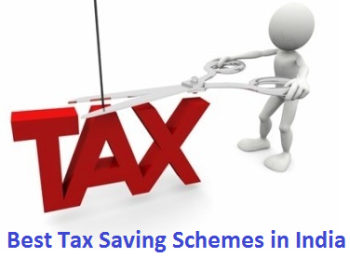Cut tax by investing in tax savings plans, here are some of the best tax savings plans in India.

31st March is approaching and all income tax payers have a deadline approaching to deposit their income tax or invest money in tax saving plans to minimize the tax money. It’s a cycle every year so people invest money every year in month of December and January. But to get maximum returns of the money invested, investor need to diversely invest money in different plans to have good as well as assured returns. Here are some options for the investors to get good returns on the maturity of the plan –
ELSS Tax Saving Mutual Funds – ELSS or Equity Linked Saving Schemes, are a kind of equity linked mutual funds. As they invest in equity or stocks, ELSS funds have the ability to deliver superior returns – 14-16% over the long term. That’s a full 6-8% above inflation. This return is not guaranteed though but historical evidence indicates that these returns are achievable over the long term. ELSS funds have a lock in period of only 3 years – the lowest amongst the options available. The return from ELSS funds is also tax free. Investors can invest up to Rs 150,000 in ELSS funds either as a lump sum or on a monthly basis (SIP) thereby spreading your investments over the course of the year. The latter also helps in reducing volatility that’s typical of equity linked products.
Public Provident Fund – PPF is a good option if you are looking for an option with certain returns. PPF investments earn interest at a rate announced every year – currently 8.7%. PPF return is therefore mostly at par with inflation. However, it is tax-free and you can do a lump sum or small regular investments. The duration of a PPF account is 15 years which is extendable by 5 years at a time. You cannot withdraw money from your PPF account except under certain conditions but not before 5 years. You can invest in PPF through a bank or Post Office. Ability to invest online is limited.
5 Year Bank FDs – This is a variant of the regular Bank FD with a 5 year lock in. They offer slightly higher interest rates compared to normal FDs (0.25-0.5% higher) but does not offer liquidity option- even premature withdrawal with penalty is not possible. The amount you can invest is limited to Rs 1,50,000. The interest you earn on your 5 year bank FD is fully-taxable and you will have to pay taxes on a yearly basis for the interest you earn for that period. TDS typically collected by banks is only 10% (20% in case you have not submitted your PAN) and if you happen to be in the 20 or 30% tax bracket, you need to pay the remaining interest while filing your IT returns. Post-tax, 5 year bank FDs are not particularly attractive- especially for people in the 20 and 30% tax brackets since the post-tax returns (6-7%) are typically lower than other tax saving investment options.
National Savings Certificate (NSC) – NSC interest rates are fixed in April every year. The current rate is 8.5% for 5 year lock-in NSCs, and 8.8% for 10 year lock-in NSCs. The interest accumulated is fully taxable. However, one key difference here is that the interest amount is not paid out to the investor. Instead, it’s re-invested in NSC and therefore can be considered as your investment in NSC for the subsequent year. Needless to say, this is complex. Investments up to Rs 150,000 are eligible. You can invest in NSC via your local post office.
Life Insurance Premium – This was almost the default tax saving option for years However, over the last few years, most informed investors have learnt the perils of choosing this option
There are 2 kinds of Life Insurance Policies:
• Pure risk also called term life which ensure a risk to the life of the insured.
• Risk + investment: which pay you back money over time.
While pure risk life insurance is something everyone with a dependant must have, it’s not an investment. Life insurance is an expense- something you pay to ensure that your dependents are not left stranded should something unfortunate happen to you. Term life insurance is cheap and for a sum of about Rs 10000, you can purchase a cover of Rs 1 Cr.
The returns from and costs of investment oriented insurance policies are not transparent and usually not attractive. We won’t go into length on this topic but suffice to say that you should not consider Life Insurance as a tax saving investment option.
National Pension Scheme – National Pension Scheme is a lot like investing in mutual funds with its Safe, moderate and Risky options. The returns are not guaranteed. You cannot withdraw until 60 and the corpus amount must necessarily be invested in an Annuity. The withdrawals are also taxable. Contributions up to Rs 150,000 are eligible for deduction under Sec 80C. You can invest via the specified list of NPS fund managers with points of presence operated through banks. However, given the restrictions that come with NPS, it’s not a recommended option.
Pension Funds – Pension funds are designed to provide you an income stream post retirement. They come in two flavours: Deferred Annuity and Immediate Annuity. For deferred annuity plan, you invest annually until your retirement. Once you reach your retirement, you have can withdraw up to 60% of your accumulated corpus and have to re-invest the remaining in an annuity fund which will give you a monthly pension. When it comes to immediate annuity plans, you invest a bulk amount one-time and get monthly pension from the next month itself. You would typically use these to invest your retirement corpus. Pension funds are not very popular because of the sub-par returns (around 6%) that they give and the restriction they come with. That’s less than India’s inflation rate and not even half of what ELSS funds provide in the long run. Pension funds are offered by a number of providers. Contributions up toRs 150,000 are eligible for deduction.
Other Tax Saving Investments & Expenses
Apart from voluntary contributions we make, there might be some forced savings/ expenses that already qualify for tax saving.
Tuition Fees for Children – Tuition fees for up to 2 children are covered under section 80C. Please note that it covers tuition fees only and not development fees or donations.
Home Loan Principal Repayment – You are eligible for tax exemption for the repayment you make towards your home loan principal. Do note that the interest component is not eligible for tax benefits.

 Currency Convertor
Currency Convertor Post an article
Post an article Covid19 Updates
Covid19 Updates Elive Today.
Elive Today.
 sending...
sending...




